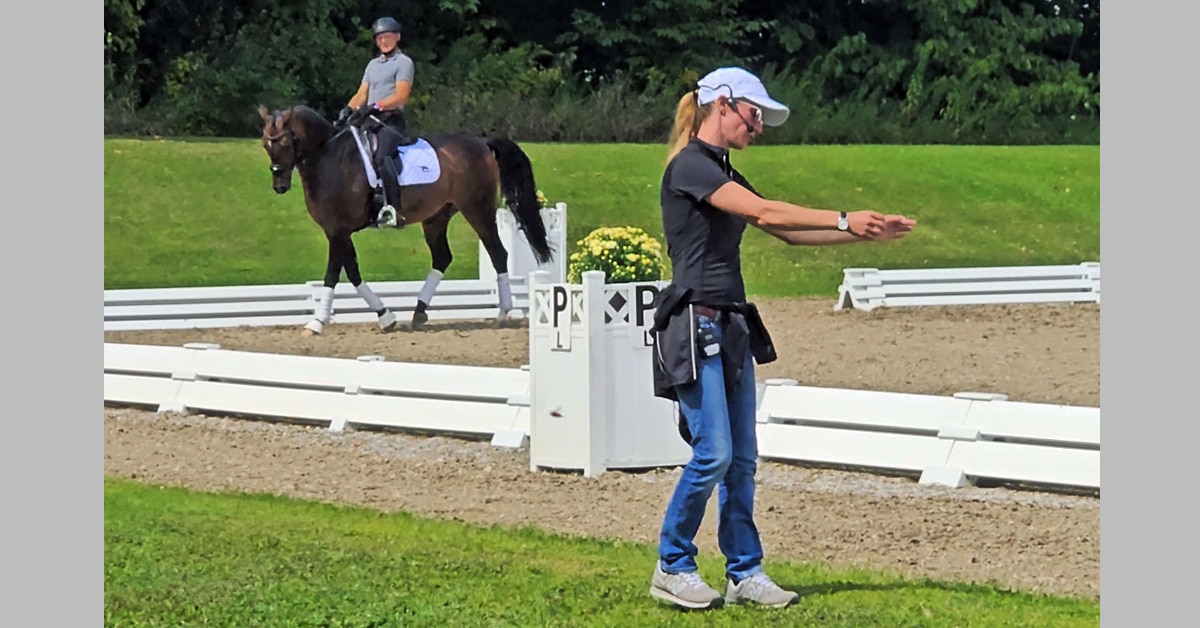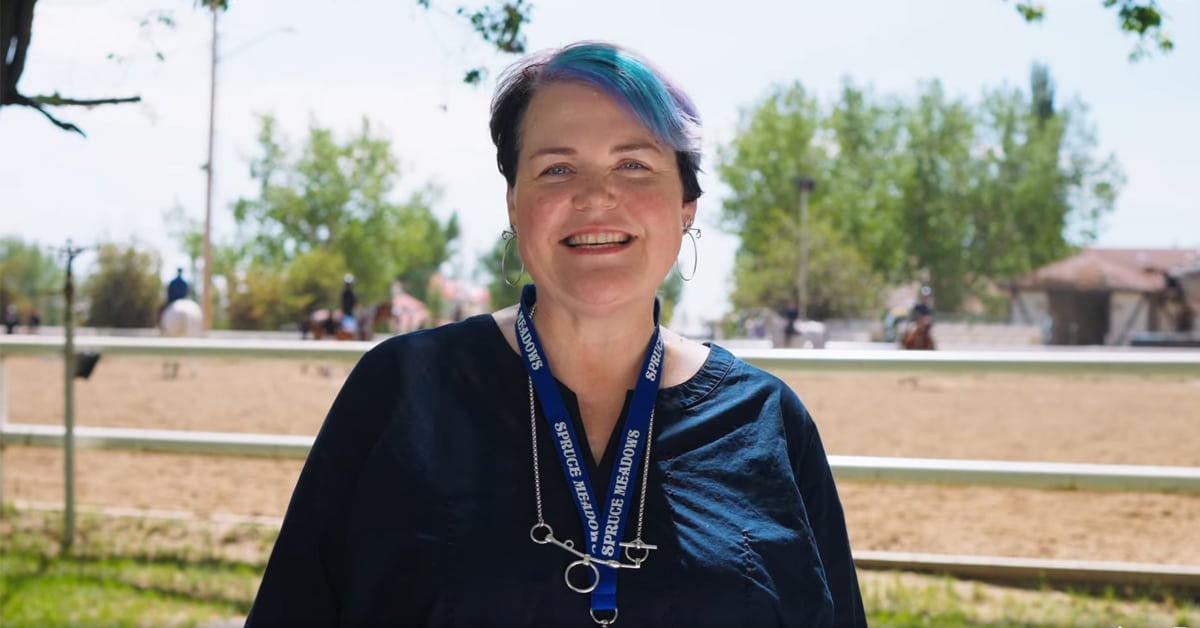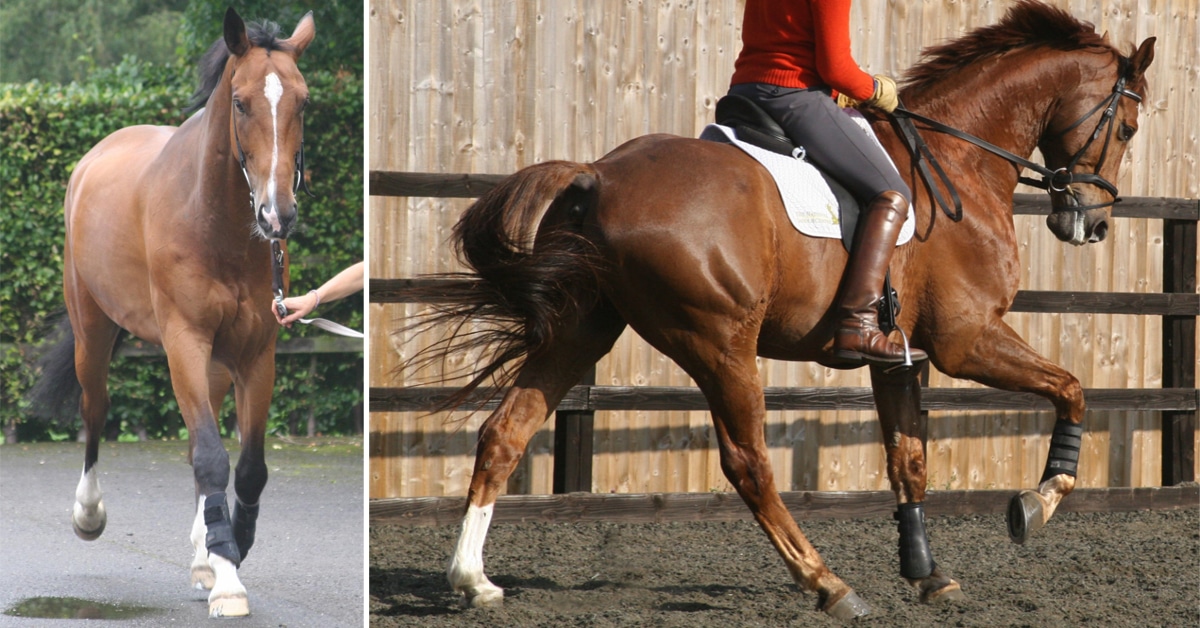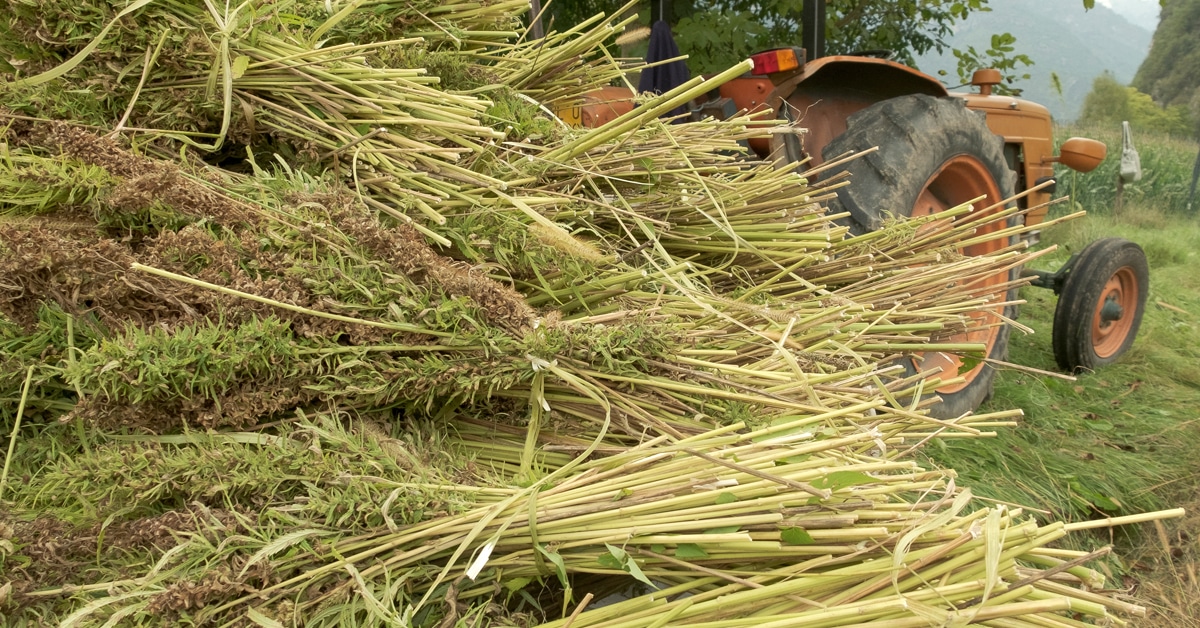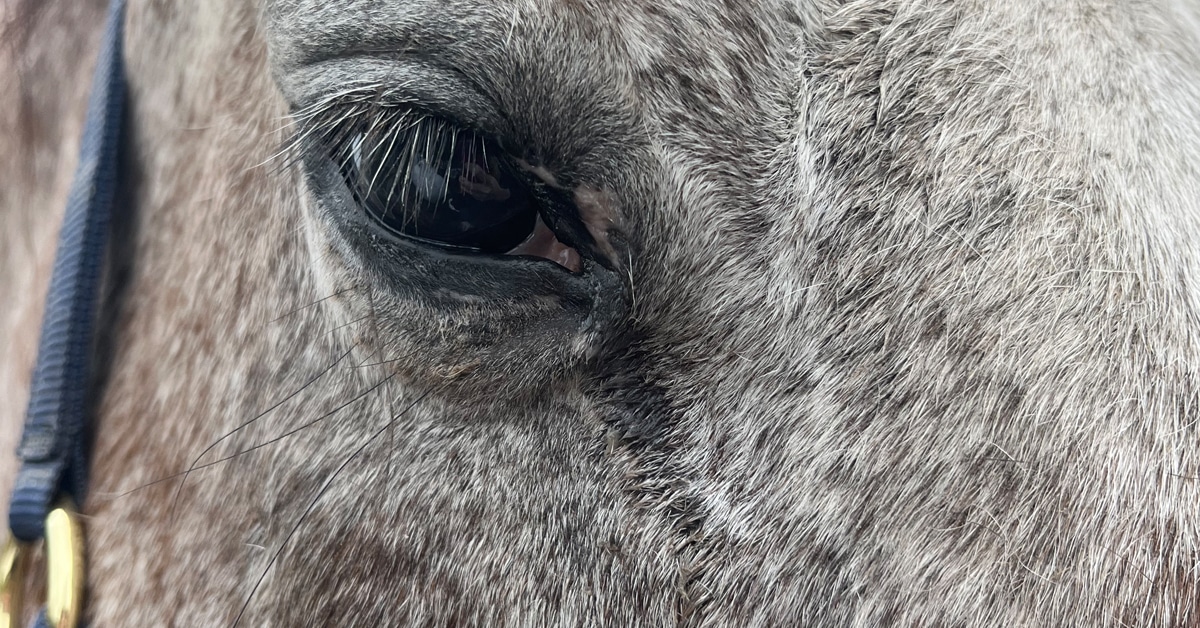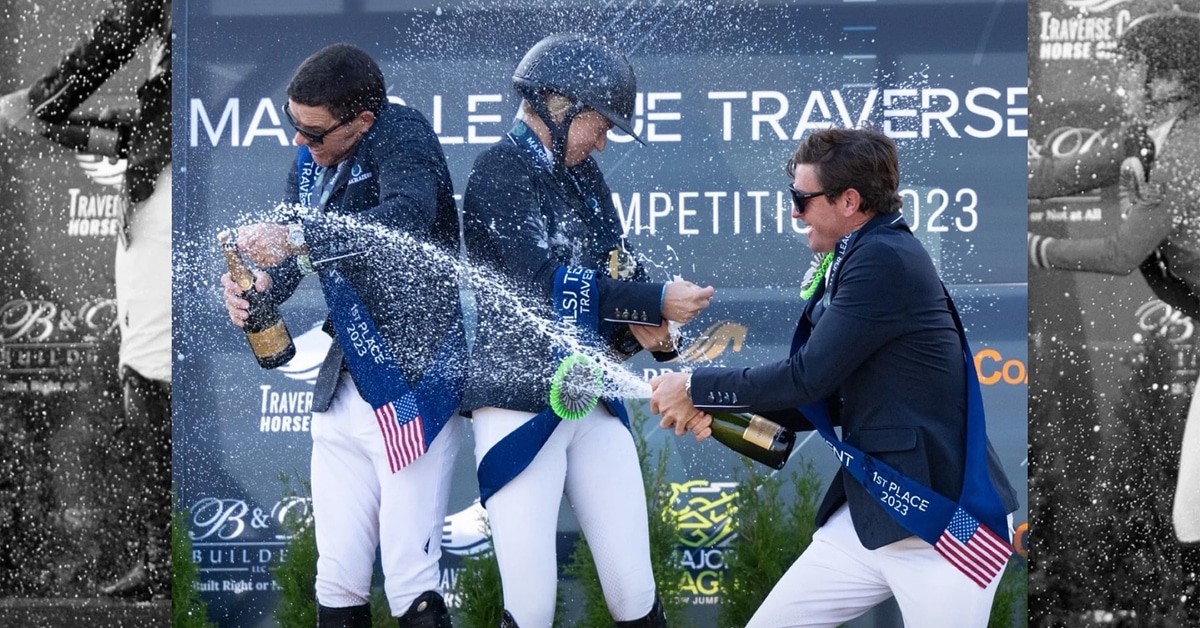Your dressage tests have been getting good marks and your horse is jumping confidently on the cross-country course. But when you get to the stadium jumping phase, does it all fall apart?
Eventer Waylon Roberts says a common issue he sees in the stadium phase is that a positive, forward rhythm has not been established early enough, meaning the horse is underpowered throughout the course and the rider has to struggle to get the proper momentum.
Another problem is horses coming through a corner bent to the outside, because the rider is trying to keep him deep into the corner. The rider needs to teach the horse to stay off the inside aids and come onto the outside leg and rein so that his hindquarters will follow his shoulders through the turn, thus keeping the horse’s eye on the jump through the corner.
Here are some exercises he recommends to prepare for stadium jumping in the coming season.
(A)
Along the quarter lines, place sets of two parallel poles placed about 4′ apart. As you trot and canter around the arena, come through the poles in a straight line, then leg yield back and forth to the track. When you are finished with this warmup, halt between one set of poles.
Next, place six to eight poles in a line with about 4′ between each, depending on your horse’s stride. You may have to start with fewer poles if your horse is nervous about trotting multiple poles. Three or four strides beyond the line, put two parallel poles and practice trotting the line, then moving straight through the parallel poles. When you finish the exercise, halt your horse between the parallel poles. This reinforces obedience and straightness in the halt.
(B)
Remove every other pole in the line and set the remaining ones to about 9′ apart. Canter poles get horses to hold the rhythm. Again, end the exercise by halting between the parallel poles after you’ve done the canter line a few times.
Replace the last pole in the canter line with a smaller oxer. As you add height, use a V rail to guide the horse to the centre of the jump. As the jump gets bigger and you’re really holding the horse to a rhythm, he is going to look for ways around that height by twisting. The V rail clarifies what we are looking for, which is straightness.
For the next exercise, set three to five cavalettis around a corner of the arena, about 9′ apart at the centres. Canter through; you want the horse riding off your leg, not your hand, and staying in centre. Do it from both directions. Set parallel poles on the long side of the arena several strides beyond the cavalettis and practice moving straight through them, then halting.
(C)
Set four small verticals in a circle with two parallel poles in the centre of the circle. Canter every other jump on the circle, then come through the centre poles. Build to all four jumps, using your eyes to look to the next jump, keeping the horse balanced with the outside rein and outside leg.
Keep relaxation and clarity in the work. If your horse gets worried, you’re never going to teach him anything. These exercises work on several issues (rhythm, square halts, corners) at the same time, which is more effective than focusing on a single problem.
The Latest
